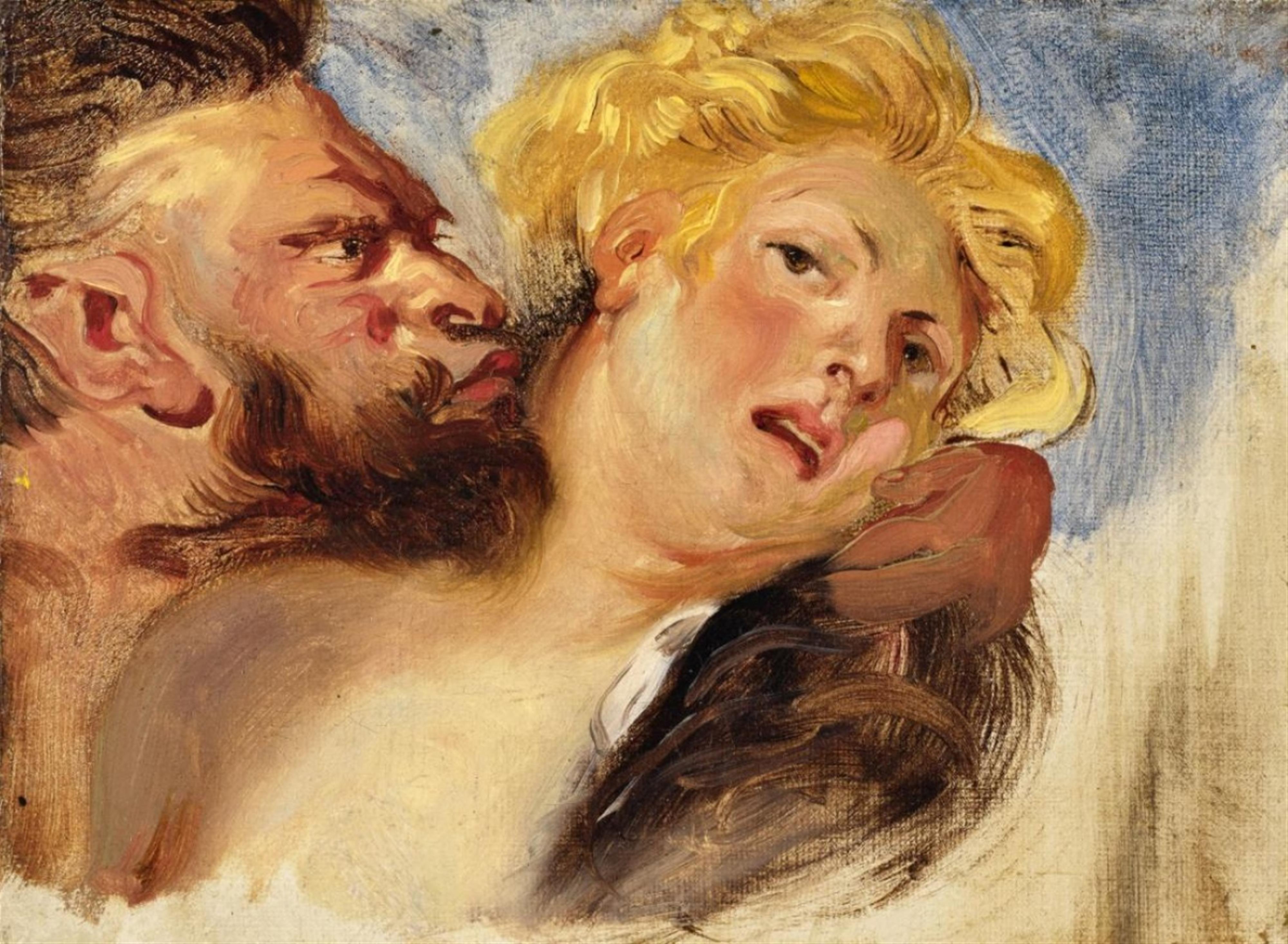Eugène Delacroix
Satyr and Nympf (after Peter Paul Rubens)
Oil on canvas. 16.5 x 22 cm.
Eugène Delacroix never occupied himself more intensely with any other artist than Peter Paul Rubens, whose works he copied and whom he studied attentively in his journal. The copies covered several genres: Religious and mythological works, portraits and hunting scenes, whereby Delacroix's copies are always in a smaller format than Rubens' originals. They can generally be divided into two groups, copies of complete compositions and of small details. Delacroix was mainly interested in the dynamics of the composition or individual figures. This is apparent in the present work, which was found in the artist's estate along with a number of further copies. The motif is taken from the history painting "Diana Departing for the Hunt", dated 1615 (216 x 178 cm, Cleveland Museum of Art, Inv.-Nr. 1959.190). Compared to the other pieces, which were mainly dated between 1620 and 1630, this large format painting was from Ruben's early phase.
Delacroix has chosen the most dynamic section of the mythological scene for his copy: A satyr is shown besetting a nymph from the goddesses' entourage, pressing his mouth against her cheek to steal a kiss, whilst the nymph turns away and attempts to free herself from the embrace. Delacroix isolates both of the figure's heads and increases the dynamic nature of the scene through his strong brushstrokes - the powerful advance of the satyr, the jutting of his chin and the nymph's struggling are all dissolved in an expressive flurry of colour.
Delacroix had many opportunities to view and copy Ruben's originals, such as the large format history paintings of the Medici cycle, which he copied several times. He also saw many of Ruben's works whilst travelling, such as in Brussels and Antwerp, the birthplace of the Flemish artist. In Delacroix's times, the "Diana" was kept in the collection of Sir Simon Clarke in East Barnet, Herfordshire. It is probable that Delacroix saw the painting during his trip to England in 1825, when he also copied other works by the artist in London, such as the Apotheosis of the Duke of Buckingham (then in the collection of the artist David Wilkie) or the Adoration of the Magi (then in the collection of the Marquis of Westminster, Grosvenor House).
Provenance
Estate of Eugène Delacroix', auctioned 17.-29.2.1864, lot 174 (sold to de Bellio for 330 fr.). - Johan Lønberg, Denmark. - Auction Bruun Rasmussen, Copenhagen, 30.4.1964, lot 1166. - Galerie Nathan, Zurich.
The Rau Collection for UNICEF
Literature
Alfred Robaut: L'oeuvre complet de Eugène Delacroix. Peintures. Dessins Gravures Lithographies, Paris 1885, p. 474, no. 1945. - Lee Johnson: The Paintings of Eugène Delacroix. A Critical Catalogue. Oxford 1981, vol.1, pg. 15f., nr. 18; vol. 2, illus. 16. - Exhib.cat. Rolandseck: Kunstkammer Rau. Superfranzösisch, edited by Oliver Kornhoff, Köln 2010, p. 108, illus. p. 45.

